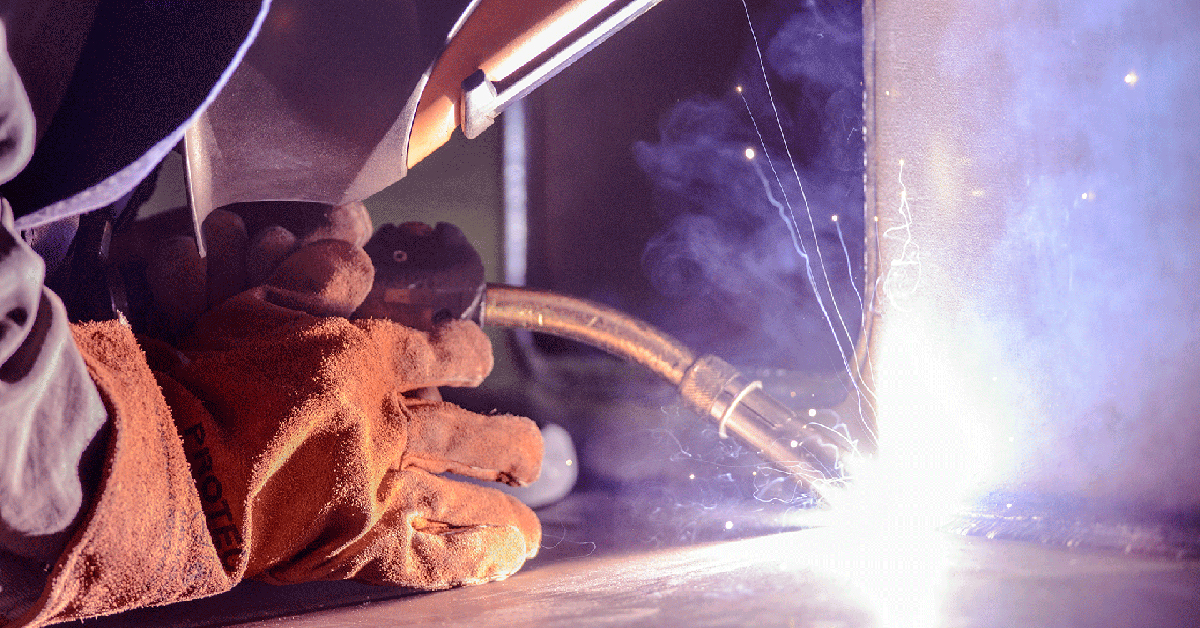Best Practices for Preventing Weld Undercut: Grasping the Essentials
Best Practices for Preventing Weld Undercut: Grasping the Essentials
Blog Article
Recognizing the Causes and Solutions for Undercut Welding in Steel Manufacture Procedures
In the world of metal fabrication processes, the occurrence of undercut welding poses a significant challenge that requires a thorough understanding of its reasons and feasible options. The complex interplay of various factors throughout welding procedures can cause this unfavorable phenomenon, impacting the architectural honesty and general quality of the welded joints - Preventing weld undercut. By studying the origin triggers of undercut welding and exploring reliable restorative procedures, fabricators can elevate the criterion of their craftsmanship and guarantee the manufacturing of perfect metal parts
Typical Causes of Undercut Welding
Regularly overlooked in metal fabrication, undercut welding happens due to different aspects that require thorough focus and proficiency to be efficiently alleviated. Furthermore, incorrect welding methods, such as making use of the incorrect welding angle or take a trip speed, can likewise contribute to undercut formation. The choice of welding parameters, such as voltage, current, and wire feed rate, plays a substantial duty in the event of undercut welding.
Effect of Incorrect Welding Parameters
Unreliable welding parameters can substantially endanger the integrity and quality of welded joints in steel manufacture procedures. The impact of inaccurate welding specifications shows up in numerous means, leading to structural weaknesses and problems in the welded elements. Careful focus to welding criteria is paramount to ensure the production of premium welds with the preferred mechanical residential properties and architectural honesty.
Result of Improper Lantern Angle
Improper lantern angle in welding operations can considerably impact the top quality and stability of the last weld joints in steel manufacture procedures. Undercutting is an usual welding flaw where a groove develops along the weld toe, compromising the joint and compromising its architectural stability.
A torch angle that is too high can bring about inadequate penetration, insufficient combination, and enhanced spatter. On the other hand, a lantern angle that is as well shallow can lead to excessive infiltration, burn-through, and distortion of the base product. Preventing weld undercut. Proper lantern angle is necessary for guaranteeing consistent weld high quality, strength, and look
To stop undercutting and various other problems triggered by incorrect torch angles, welders need to be trained to keep the appropriate lantern angle throughout the welding process. Normal monitoring and change of torch angles throughout welding can help attain sound welds with very little defects.
Duty of Inadequate Welding Techniques

One more aspect of inadequate welding techniques is inappropriate weld prep work. Insufficient cleaning of the base metals, incorrect joint layout, or not enough side preparation can all contribute to damage welding. Inadequate securing gas protection or using the incorrect kind of gas can result in incomplete blend and the development of undercut problems.
To address the duty of insufficient welding techniques in steel fabrication procedures, it is vital to supply comprehensive training for welders. Correct education on welding parameters, joint prep work, and shielding gas option can help protect against undercut welding and make sure premium welds in steel construction projects.
Efficient Solutions for Undercut Welding
Addressing undercut welding in steel fabrication calls for implementing reliable solutions to boost weld quality and architectural stability. Among the primary options to combat undercut is to change welding parameters such as voltage, present, and take a trip speed to make sure correct heat input and combination. By fine-tuning these setups, welders can avoid too much melting of the base steel and filler product, decreasing the probability of undercut development.
Additionally, appropriate joint prep work is essential in stopping undercut. Ensuring clean base metal surface areas free of contaminants and utilizing the ideal bevel angle can help promote much better weld infiltration and lower the risk of undercut - Preventing weld undercut. Employing appropriate welding read review methods, such as weaving or oscillating the lantern, can also aid in distributing warm uniformly and loading the weld joint properly, reducing the possibility of undercut flaws
In addition, picking the click this link proper welding consumables, including electrodes and filler steels, is important in reducing undercut. Utilizing materials with suitable chemical structures and mechanical buildings can add to attaining audio welds with marginal undercut. Normal examination and top quality control actions must likewise be carried out to find and attend to undercut problems quickly, wikipedia reference guaranteeing the overall integrity of made steel elements.

Conclusion
To conclude, understanding the reasons and options for undercut welding in metal fabrication procedures is vital for accomplishing premium welds. By dealing with common reasons such as inaccurate welding specifications, improper lantern angle, and insufficient welding techniques, welders can protect against undercutting and ensure solid, long lasting welds. It is important to focus on these variables and carry out effective options to improve the total welding process and end product quality.

Report this page